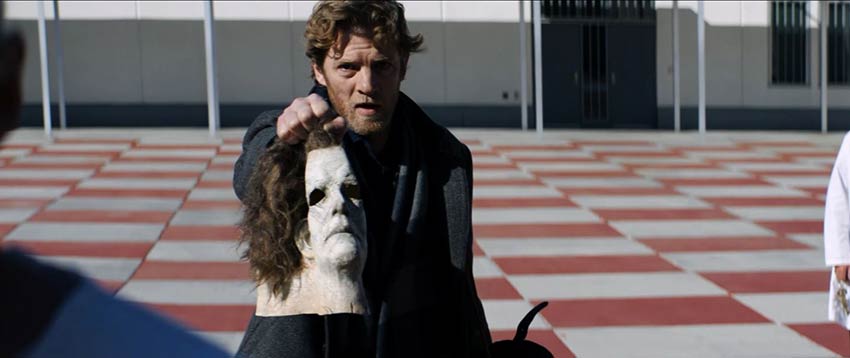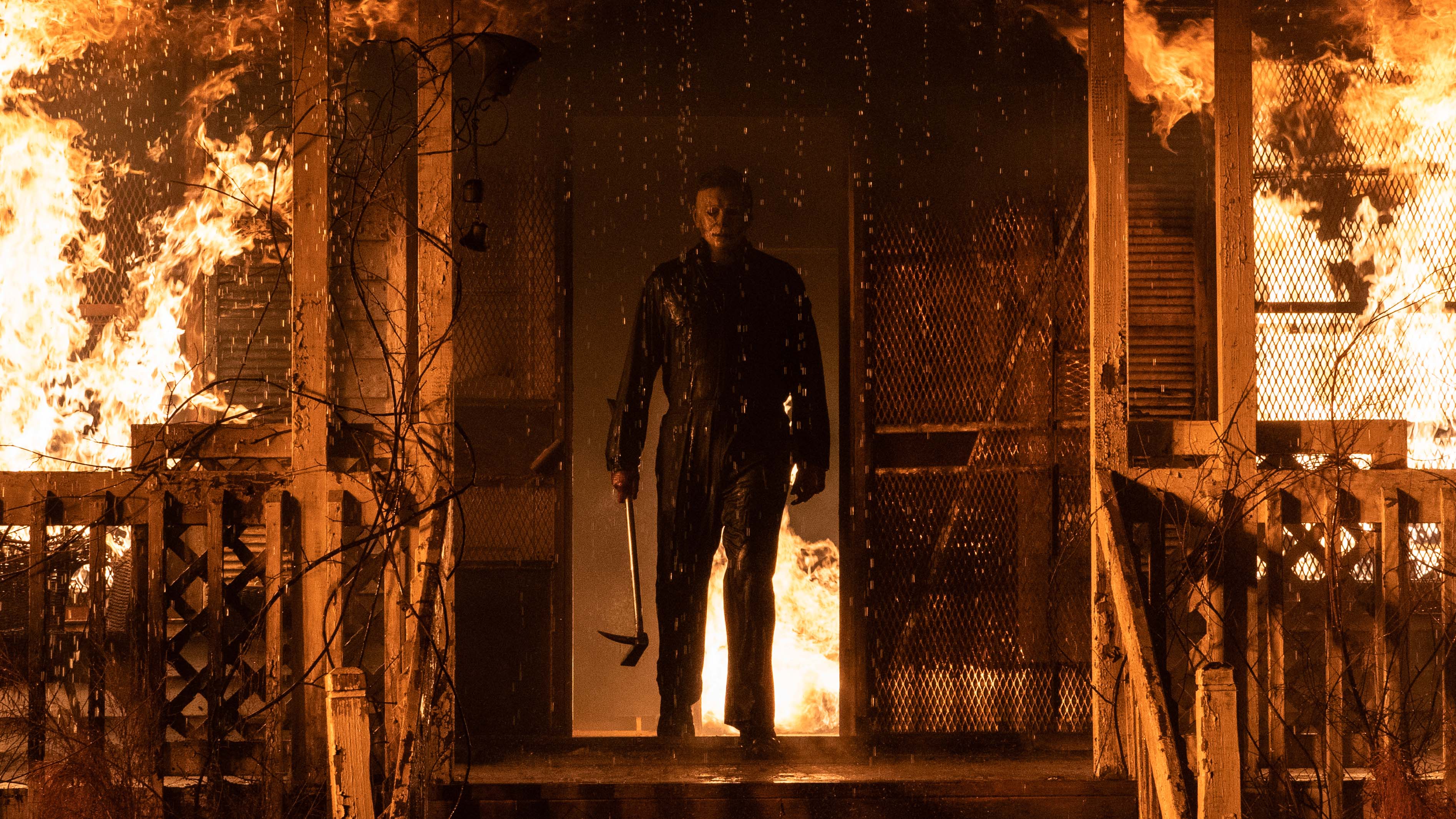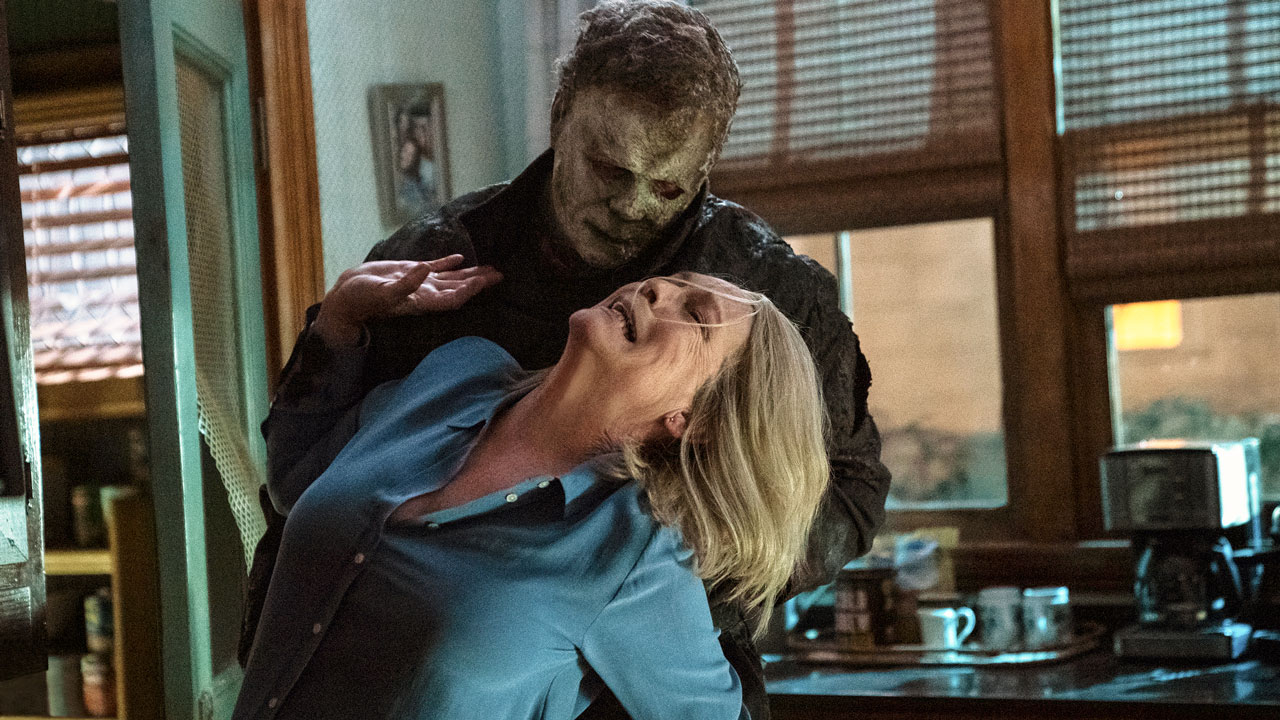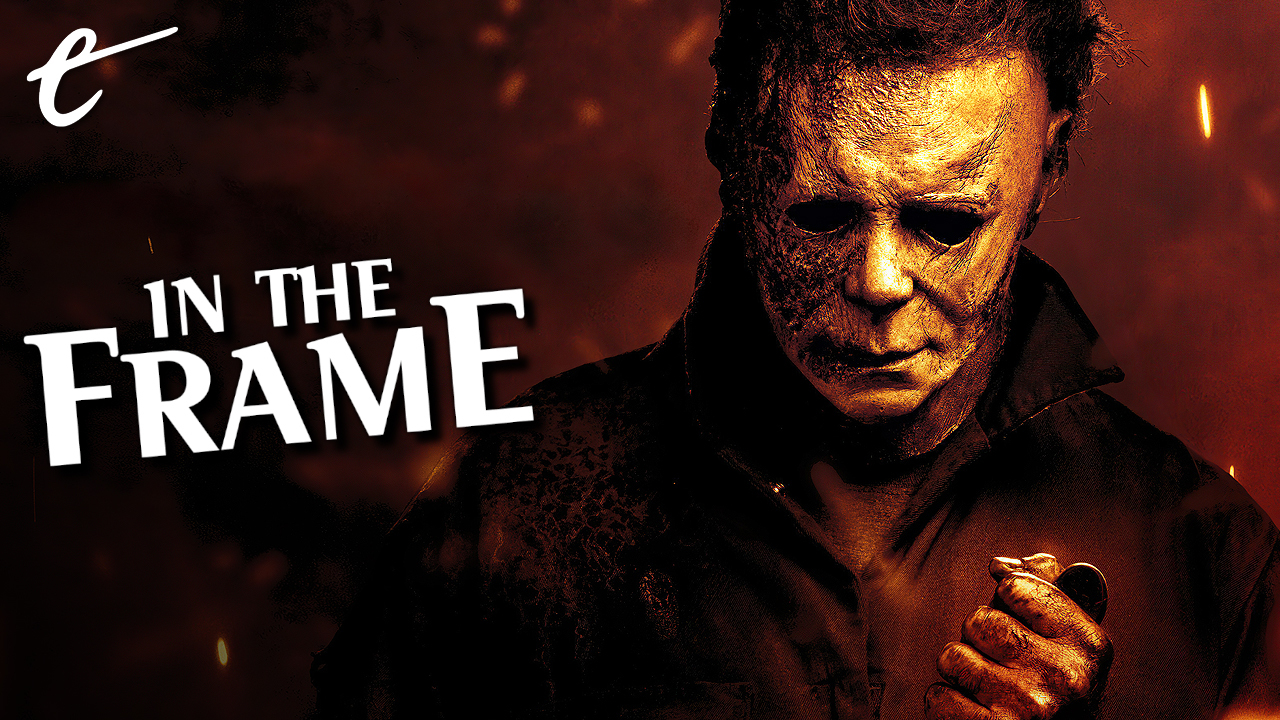It has been five years since the release of David Gordon Green’s “requel” Halloween, and one year since the director wrapped up his trilogy with Halloween Ends. With reports already suggesting that plans are underway for the next phase of the Halloween franchise and with Green putting his stamp on another 1970s horror franchise with The Exorcist: Believer, it seems like the perfect opportunity to take a look back at Green’s three entries: Halloween, Halloween Kills, and Halloween Ends.
It is to the credit of producer Malek Akkad, who assumed creative control of the franchise following the tragic passing of his father Moustapha in 2005, that the Halloween franchise has been willing to take big creative swings. When the cycle of 2000s horror reboots hit Halloween, it was one of the only examples of the trend to hire a genuine auteur to revisit the original film. However one might feel about Rob Zombie’s Halloween movies, they are undeniably Rob Zombie movies.
After Zombie’s Halloween II, the decision was made to “deboot” the franchise, to partially restore the original continuity by making a sequel to John Carpenter’s original Halloween while jettisoning all of the sequels. Taking over production from Miramax, Blumhouse turned to director David Gordon Green. Green was a promising indie director who had emerged from the same Texas scene that had produced filmmakers like Robert Rodriguez and Richard Linklater. He was an odd choice for the role.
Green has made an impression with his low-budget debut, George Washington. However, his career took a number of sharp turns. He would strike up a relationship with actor Danny McBride, who served as second unit director on George Washington, and with whom he would go on to collaborate with frequently. He would embrace comedy with movies like Pineapple Express and Your Highness. Green would collaborate with McBride on shows like Eastbound & Down, Vice Principals, and The Righteous Gemstones. McBride would serve as a story and screenwriting collaborator on Green’s Halloween and Exorcist movies.
Green’s work on the Halloween franchise is interesting for a couple of reasons. Most obviously and most superficially, he is the first director since Tommy Lee Wallace on Halloween III: The Season of the Witch to feel genuinely influenced by John Carpenter’s style and sensibility. (Wallace had worked as Carpenter’s editor on the original Halloween, and actor Tom Atkins described Wallace as “John’s right hand man.”) Green’s films feel stylistically of a piece with Carpenter’s work on the franchise.
However, there is also something simmering beneath the trilogy’ surface. They are undeniably movies of their cultural moment. Largely driven by returning lead Jamie Lee Curtis, much of the narrative around these films has focused on “trauma.” That is certainly part of their thematic focus. The first of the three movies was released in the context of #MeToo. That said, they also reinvent Michael Myers (Nick Castle and James Jude Courtney) to speak to their moment.

Discussion of modern horror often fixates on the term “elevated horror,” although “metaphorror” is perhaps the better descriptor. While the genre has always been a tool for social commentary, a significant number of recent horrors aggressively and occasionally heavy-handedly foreground their themes. Green’s Halloween movies aren’t arthouse horror like Hereditary or Men, nor are they “social thrillers” like Get Out or Candyman. They are slashers, but they also speak to their moment.
To be clear, this has always been the case. The original Halloween was a movie that spoke to the anxieties of its moments. It was released in the midst of what has been termed “the golden age of serial murderers.” In its own way, it spoke to the fears underpinning “white flight” — the anxieties of affluent parents who had taken their children away from the perceived depravity of the inner city to the safety and security of the suburbs, only to realize that the real evil was inside their community.
The same is true of even the grungiest of the sequels. Halloween 4: The Return of Michael Myers is a movie that resonates with the resurgent conservatism of the Reagan era. Michael (Tom Morga and George P. Wilbur) is framed as the literal devil by Reverend Jackson P. Sayer (Carmen Filpi). Locals discover that big government cannot save them after Michael murders the entire sheriff’s department, driving them to vigilantism. The climax finds the literal family homestead under siege.
The sixth film in the series, Halloween: The Curse of Michael Myers, even resonates with the conspiracism of the Clinton era. Tommy Doyle (Paul Rudd) pores over newspaper clippings and ancient prophecies to construct a grand unified theory about what drives Michael (Wilbur). Michael is no longer a random killing machine, but instead exposed as the tool of a sinister cabal conducting sinister research, headed by Dr. Terence Wynn (Mitch Ryan). It’s all very JFK and X-Files, but with knives and druids.
Green wisely jettisons all of this, and returns to the idea of Michael Myers as a silent and mysterious figure. However, over the course of Green’s three films, Michael comes to embody a number of anxieties that speak to this specific cultural moment. The precise meaning shifts with each of the three films – Michael’s blank white mask is something designed to be projected upon, after all – but they come together as an expression of contemporary American nightmares.
In Halloween, Michael is just evil. The film is populated with characters who attempt to explain Michael’s violence, like Doctor Ranbir Sartain (Haluk Bilginer) or podcasters Aaron Korey (Jefferson Hall) and Dana Haines (Rhian Rees). Even Laurie Strode (Curtis), the survivor of Michael’s first attack, tries to impose a narrative on his brutality. “He waited for this night,” she assures her daughter, Karen (Judy Greer). “He’s waited for me.” Ultimately, Halloween rejects these various theories.

However, while Green’s Halloween refuses to explain why Michael is, the film offers a number of overt hints about what Michael might be. In particular, what form of evil he might embody in the context of 2018. Without ever seeming heavy-handed or obvious, the film suggests that Michael can be read as a metaphor for encroaching and insidious fascism. This was very obviously a fear percolating through the American consciousness at the height of the Trump presidency.
The iconic fascist salute – the raised right arm – appears repeatedly in the film. Aaron raises Michael’s mask in his clenched right fist as the film cuts dramatically to opening credits. Later on, one of the dummies in Laurie’s bedroom stands in the pose, although Michael adjusts it with his bloody hand as if to draw the audience’s attention to the gesture. It is worth acknowledging that the gesture itself re-entered American public life during the Trump era.
There are other similar visual cues. Early in the film, Dave (Miles Robbins) boasts of the tattoo that he got marking the date. After Michael murders Dave, the last shot of the teen’s body closes in on the six digits tattooed on his arm, another evocative image of fascism. Even Michael’s violence is fascist coded. In one of the film’s most unsettling images, he removes the teeth of a gas station attendant and taunts Dana with them, recalling another image of the Holocaust. He kills Sartain by crushing his skull beneath his boots, suggesting curb-stomping.
The most pointed aspect of Green’s Halloween trilogy is not Michael himself. It is the reaction to Michael. In Halloween, the characters try to explain Michael’s evil. It recalls the way in which the mainstream media could often seem to normalize and excuse this resurgent fascism. Editorials were written that seemed to sympathize with white supremacists. Arguments were made that such beliefs were rooted in “economic anxiety” and that they could be reasoned with and understood.
Halloween has very little patience for this. Tellingly, Michael turns very quickly on Sartain, Aaron, and Dana, just as quickly as real-life fascists turn on those well-meaning individuals who provide them with the cover of legitimacy. It’s the parable of the scorpion and the frog. The real fear in Halloween isn’t Michael. After all, Michael is only unleashed by Sartain, who wants to see what will happen. The true threat in Halloween is those people who cannot recognize evil for what it is.
This theme continues through the next two movies, although it takes different forms. In Halloween Kills, one of the bleakest and most nihilistic mainstream studio releases in recent memory, Michael continues to tear through the community of Haddonfield. Like The Exorcist: Believer, Halloween Kills is a story about the dissolution of community. It is about the idea that there is no longer any sense of shared identity or common purpose between citizens.

Reflecting America’s polarized reality, Haddonfield descends into madness. It’s also a film that inverts the traditional gender dynamics of the slasher movie, offering a timely portrait of masculinity in crisis. Cameron (Dylan Arnold) tries to win his girlfriend Allyson (Andi Matichak) back by participating in the hunt for Michael, just as Marcus (Michael Smallwood) tries to impress his wife Vanessa (Carmela McNeal). Tommy (Anthony Michael Hall) and Lonnie (Robert Longstreet) attempt to work through their own childhood traumas by killing Michael. They do not succeed.
Halloween Ends doubles down on this masculine anxiety with the character of Corey Cunningham (Rohan Campbell). After Michael disappears, Corey becomes the community outcast when he accidentally kills the child (Jaxon Goldberg) he was babysitting. Corey comes to feel anger and resentment towards Haddonfield. He’s brought into contact with Michael, who is – in his weakened state – living in the sewers beneath the city as if hiding in the community’s collective subconscious.
An angry young man who feels misunderstood by his community, Corey taps back into the classic subtext of the slasher movie. Dating back to the original Halloween, Michael has been read as an expression of a particular kind of white male violence. Recent years have seen a renewed focus on these crimes, often perpetrated by young white men angry at women or their communities, turning a sense of disenfranchisement into an excuse for mass murder.
Like Sartain, Dana, and Aaron in Halloween, Corey is an acolyte of Michael Myers. He is a stand-in for all those young men seduced by the allure of fascism, and driven to violence in service of it. Just like Sartain, Dana, and Aaron in Halloween, Michael doesn’t actually care about Corey. At the climax of the film, Corey isn’t killed by Laurie. He attempts to kill himself, but is ultimately killed by Michael. It’s a reminder that this evil doesn’t actually care for those who sacrifice themselves at its altar.
Green’s Halloween trilogy is a monument to a particular moment in American culture. It offers a timely take on its central monster, outlining “the Shape” nestled in a nation’s nightmares. Michael Myers is the embodiment of pure evil. Between 2018 and 2022, that evil took a very specific form. In his three Halloween films, Green offers a portrait of America stalked by a resurgent fascism and unraveling in real-time. Michael Myers becomes a boogeyman for the 21st century.






Published: Oct 13, 2023 11:00 am